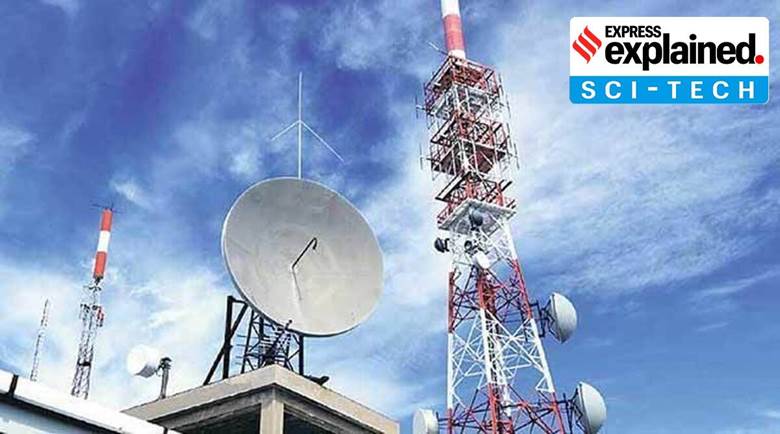Description

Copyright infringement not intended
Context: In a bid to do away with British-era laws governing the telecom sector, the Department of Telecommunications (DoT) issued draft Indian Telecommunication Bill, 2022. The proposed Bill aims to bring in sweeping changes to how the telecom sector is governed, primarily by giving the Centre more powers in several areas to do so.

Details:
- Through the Indian Telecommunication Bill, 2022, the Centre aims to consolidate and amend the existing laws governing the provision, development, expansion and operation of telecommunication services, telecom networks and infrastructure, in addition to assignment of spectrum.
- The draft Bill, which was published by the DoT, consolidates three separate acts that govern the telecommunications sector — Indian Telegraph Act 1885, Indian Wireless Telegraphy Act 1933, and The Telegraph Wires, (Unlawful Protection) Act 1950.
- One of the key changes is inclusion of new-age over-the-top communication services like WhatsApp, Signal and Telegram in the definition of telecommunication services.
- As per the draft law, providers of telecommunication services will be covered under the licensing regime, and will be subjected to similar rules as other telecom operators.
- This issue has been under contention for several years now with telecom service providers seeking a level-playing field with OTT apps over communication services such as voice calls, messages, etc. where operators had to incur high costs of licences and spectrum, while OTT players rode on their infrastructure to offer free services.
- The Centre is also looking to amend the Telecom Regulatory Authority of India Act (TRAI Act) to dilute the sectoral watchdog’s function of being a recommendatory body.
- The current TRAI Act mandates the telecom department to seek the regulator’s views before issuing a new licence to a service provider. The proposed Bill does away with this provision.
- It has also removed the provision that empowered TRAI to request the government to furnish information or documents necessary to make this recommendation.
- Additionally, the new Bill also proposes to remove the provision where if the DoT cannot accept TRAI’s recommendations or needs modification, it had to refer back the recommendation for reconsideration by TRAI.
- The DoT has also proposed that if a telecom entity in possession of spectrum goes through bankruptcy or insolvency, the assigned spectrum will revert to the control of the Centre.
- So far, in insolvency proceedings, there has been a lack of clarity on whether the spectrum owned by a defaulting operator belongs to the Centre, or whether banks can take control of it.
- The draft Bill also accords the Centre powers to defer, convert into equity, write off or grant relief to any licensee under extraordinary circumstances, including financial stress, consumer interest, and maintaining competition, among other things.
- It also proposes to replace the Universal Service Obligation Fund (USOF) with the Telecommunication Development Fund (TDF).
- USOF is the pool of funds generated by the 5 per cent Universal Service Levy that is charged upon all telecom fund operators on their Adjusted Gross Revenue. The USOF has largely been used to aid rural connectivity. However, with the TDF, the objective is also to boost connectivity in underserved urban areas, R&D, skill development, etc.
https://indianexpress.com/article/india/draft-bill-moves-to-regulate-internet-based-ott-telecom-services-8165282/














